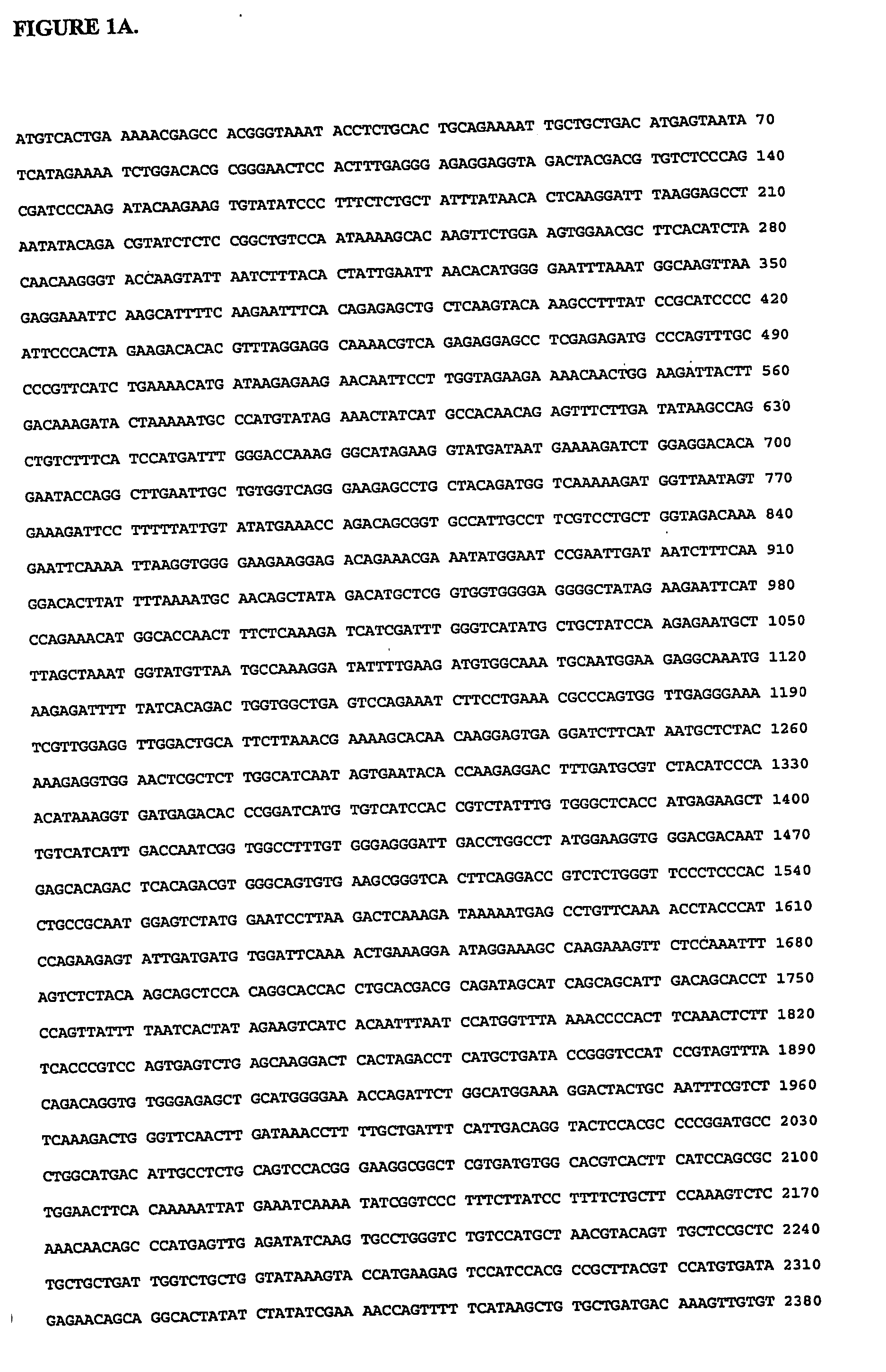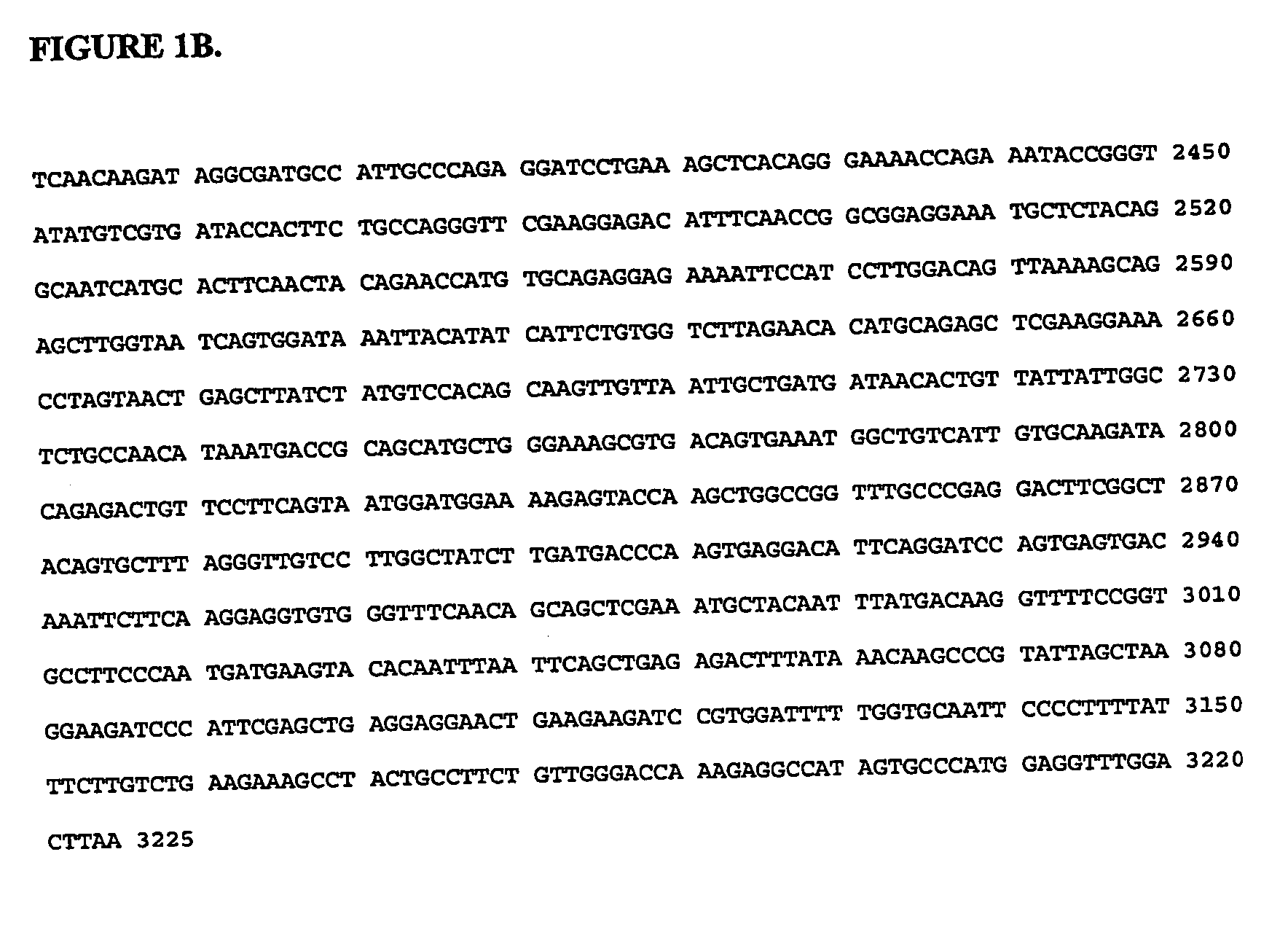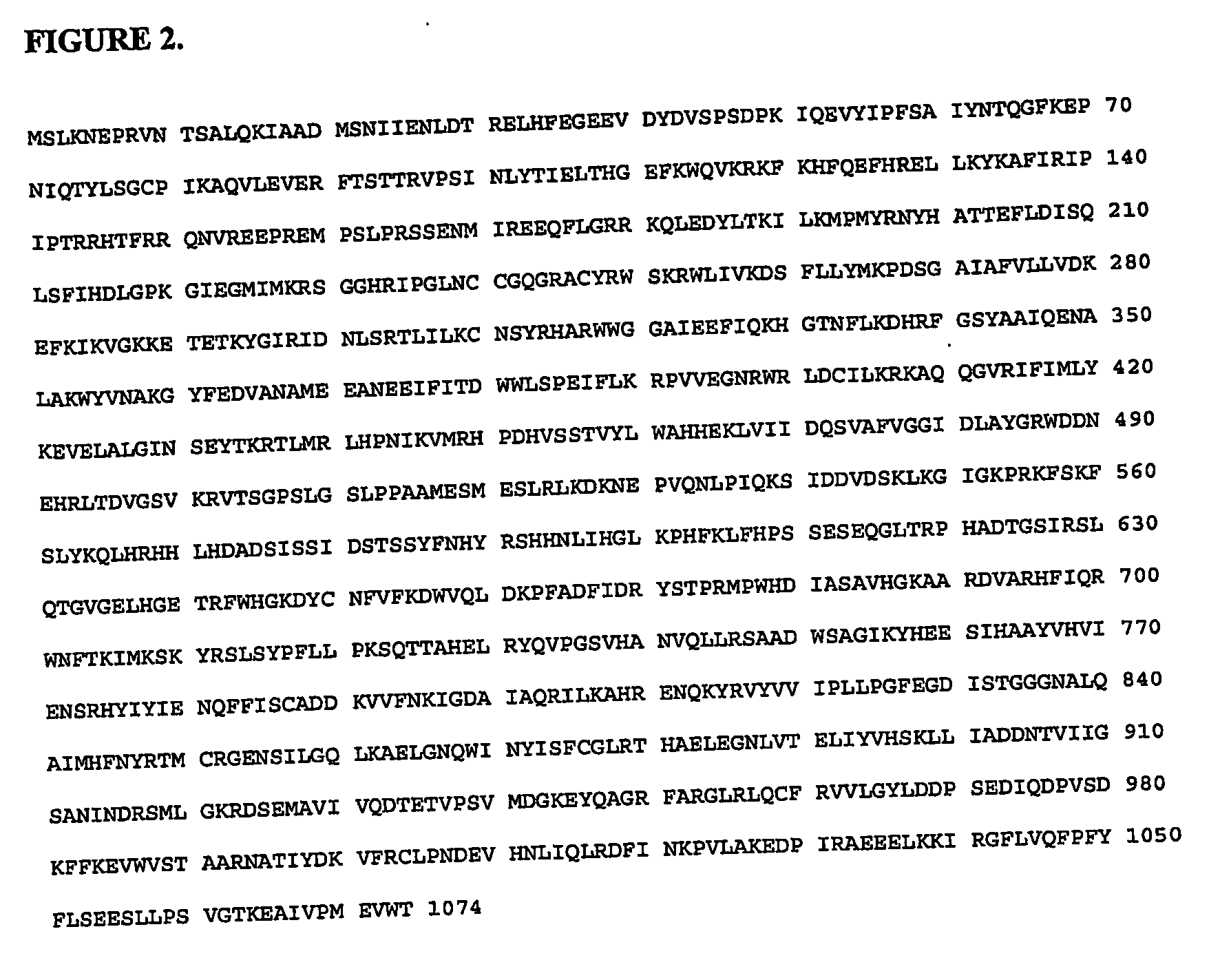Diagnosis and treatment of kidney fibrosis and other fibrotic diseases
a fibrosis and kidney technology, applied in the field of fibrosis diagnosis and treatment, can solve the problems of life-threatening, abnormal changes in tissue structure, interference with normal organ function, etc., and achieve the effects of slowing the pace of or inhibiting glomerulosclerosis, reducing the proliferation of fibroblasts, and reducing the levels of phosphatidic acid and cholin
- Summary
- Abstract
- Description
- Claims
- Application Information
AI Technical Summary
Benefits of technology
Problems solved by technology
Method used
Image
Examples
example 1
Preparation of Dedicated Rat Liver Fibrosis cDNA Microarray Array (RLF)
[0159] Three cDNA libraries were prepared in accordance with the proprietary methodology of the assignee, essentially as described in co-assigned U.S. Pat. No. 6,544,741. These three libraries are: [0160] a) RSR library, derived from cultured hepatic stellate cells, either untreated or treated with TGFβ, or PDGF or a combination of both compounds; [0161] b) RSV library, derived from freshly isolated hepatic stellate cells from CCl4 and Bile Duct Ligation (BDL) treated animals; [0162] c) RLV library, derived from total liver tissue samples excised from the same CCl4 and BDL treated animals.
[0163] 3000 cDNA clones were partially sequenced and annotated during the preparation of these libraries, yielding 1322 different non-redundant clones.
[0164] The proportion of each library to be printed on the array was determined on the basis of the analysis of the annotated clones, according to the following criteria: [0165...
example 2
In vivo Experiments for Preparation of Hybridization Probes
[0173] Two models of liver fibrosis in rats were employed, the Bile Duct Ligation (BDL) with sham operation as controls, and CC14 poisoning, with olive oil fed animals as controls. Partial Hepatectomy (PH) was utilized as a model for liver regeneration. Three types of samples were obtained for each of these models: [0174] 1. Frozen isolated hepatic stellate cells [0175] 2. Total liver tissue
[0176] (Samples 1 and 2 were used for production of RNA probes)
[0177] 3. Formalin-fixed liver tissues, which were used to evaluate the extent of fibrosis in each animal and for in situ hybridization analysis of pre candidate genes expression.
TABLE 1BDL and PH experimental platform.Liver fibrosis andRegeneration models0′6 h24 h48 h72 h4 w5 wUntreated Controlo, oCommon bile ductooooooligationSham (Control foroooooobile duct ligation)Partial Hepatectomyooo(regeneration)
o - sampling
[0178]
TABLE 2CCl4 model olive oil as control - experime...
example 3
Histological Evaluation of Fibrosis in Liver Samples
[0179] 1. Histological Evaluation of Fibrosis Status of Formalin-Fixed Liver Samples
[0180] Formalin fixed liver samples were embedded into paraffin and 5 μm sections were prepared. Each sample was analyzed by 5 independent methods: [0181] 1. Hematoxylin / Eosin (HE) histochemical staining for evaluation of morphological changes. [0182] 2. Sirius red histochemical staining for collagen accumulation. [0183] 3. Inmunohistochemical staining with anti-α-smooth muscle actin antibodies for evaluation of localization and number of activated fibrotic cells. [0184] 4. In situ hybridization with a TGFβ-specific probe and with collagen type I-specific probe for evaluation of their expression level.
[0185] A total of 260 samples were evaluated by all 5 methods. Out of these samples, 12 samples were disqualified for probe preparation due to exceptional fibrotic performance (either exceptionally more or less severe than the average picture in the...
PUM
| Property | Measurement | Unit |
|---|---|---|
| molecular weight | aaaaa | aaaaa |
| molecular weight | aaaaa | aaaaa |
| molecular weight | aaaaa | aaaaa |
Abstract
Description
Claims
Application Information
 Login to View More
Login to View More - R&D
- Intellectual Property
- Life Sciences
- Materials
- Tech Scout
- Unparalleled Data Quality
- Higher Quality Content
- 60% Fewer Hallucinations
Browse by: Latest US Patents, China's latest patents, Technical Efficacy Thesaurus, Application Domain, Technology Topic, Popular Technical Reports.
© 2025 PatSnap. All rights reserved.Legal|Privacy policy|Modern Slavery Act Transparency Statement|Sitemap|About US| Contact US: help@patsnap.com



